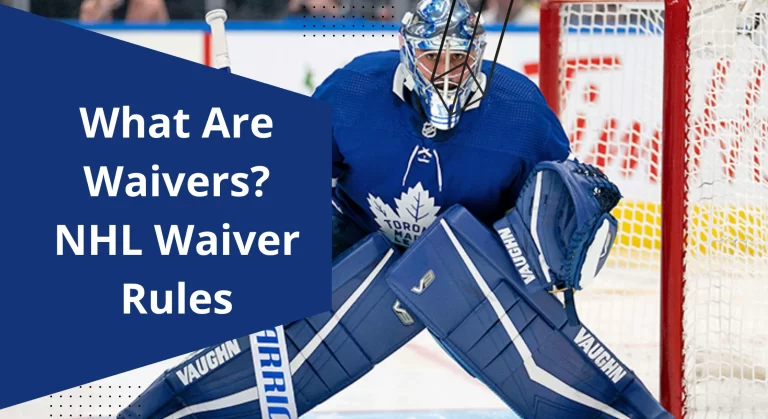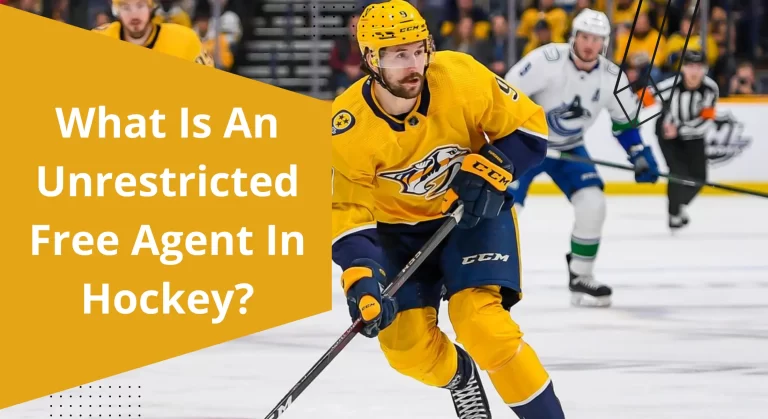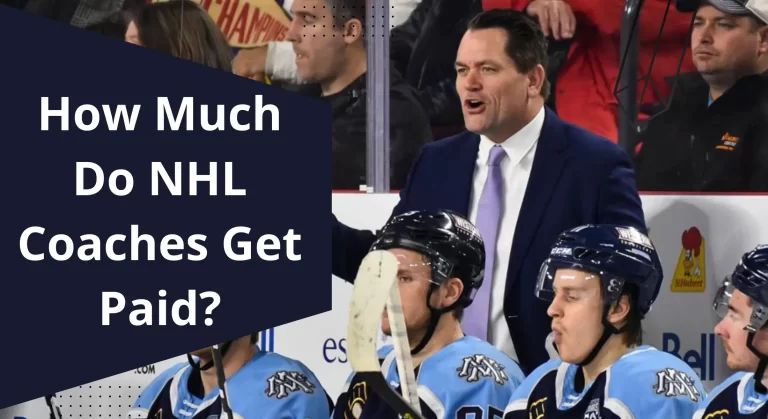What is Escrow in the NHL? A Briefly Explain!
The financial aspects of games deliver as much excitement as the commercial aspects. Escrow is one of the most interesting topics of discussion among NHL players. Although the NHL considers it to be necessary, players dislike it.
What is escrow NHL? Escrow is the process in which a specific part of the player’s payment is withheld and kept. It will be kept by the club until the club is aware of the overall income for the entire year. Based on the actual NHL earnings, the individuals will then get all or a part of the escrow back at the end of the season.
Besides this, escrow also has some further details that will explain it. So, let’s talk about it in detail.
A Briefly Explain About NHL Escrow
In the NHL, escrow is a system in which the league will delay part of the payment of the players till the end of the season. They wait until they have calculated the total revenue they received at the end of the season.
Players mostly dislike escrow. It is because they have agreements for a specific sum of money, and they expect to receive it. If your company deducted a certain amount from each payment and you had to wait till the end of the season, you would feel a lot of frustration. The players have to wait to know whether they would receive their full, approved compensation.
Why does the NHL use Escrow?
In the owners’ eyes, the lockout focused on cost estimating. Also, you can say how you can restrict the player’s wage. In the previous years of the NHL, there had never been a pay cap. Teams can invest as much money as they wished in their NHL squad.
Additionally, individuals and brokers did a fantastic job of getting the organizations to pay top prices. In this way, they got two problems. One was the NHL became more unbalanced and the second was companies started to lose money.
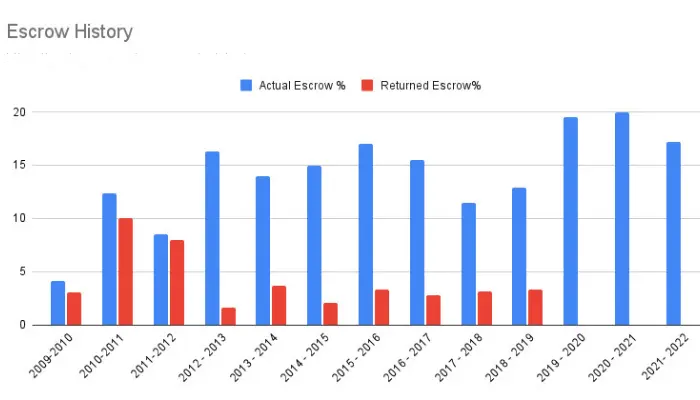
A few significant market squads, namely Detroit, the New York Rangers, and Colorado, had the financial capability to completely dominate the remainder of the NHL. They begin stocking their squads with expensive cost-free players.
This leads to an uneven structure and the formation of a club of wealthy and poor people. Owners also complained about losing cash and being forced to do so to compete in the NHL.
The main goal of the lockout was to negotiate a salary cap, which imposed a limit on how much a team could spend on players. Owners said that by doing this, they would have financial stability. In this manner, they will be capable of controlling the team’s budget effectively.
You can read this article: What Is The Average Career Length Of An NHL Player?
Salary Cap and Escrow
The lockout was won by the owners who also received the desired wage structure. The main problem is how the pay cap is determined every year.
Well, a mechanism known as Hockey Related Revenue was agreed upon between the NHL and NHLPA. Here the NHLPA indicates the NNL players association.
Hockey-Related Revenue and Escrow
The NHL club receives money every year from a predetermined group of income streams known as “hockey-related revenue.” For example, this involves the sales of products, tickets, refreshments, and television. All of this is added up by the NHL and NHLPA, and it represents the overall revenue from hockey.
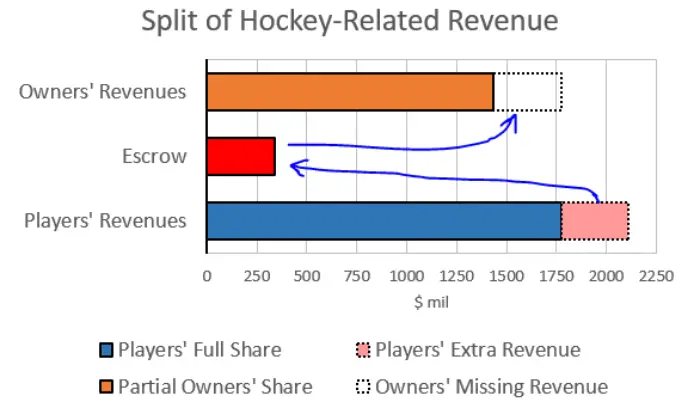
The player’s wages are then determined by dividing the income equally between the NHL and NHLPA. Thus, the remaining 50% is used for running the company’s everyday operations. It also excludes the small amount of profit for owners.
Here is a brief instance to demonstrate that everything is adherent:
- Let’s assume that the NHL earned $5 billion in annual revenue.
- Owners and players will divide all hockey-related income equally.
- The participants will receive 2.5 billion dollars as wages.
- 31 squads will be present there.
- For a wage structure, 2.5 billion/31 equals 80.6 million teams. (This is approximately where the salary cap is at the moment)
Note: The wage cap floor states that each squad must invest a specific amount in wages. In 2019–2020, it was $60.2 million.
So, where does Escrow fit into the salary cap?
Escrow involves at this point. The wage cap for the new season is always decided by the League in the spring season. It will be around 16 months before it knows how much revenue it will make. So, it is an approximation when they determine the cap.
Economic systems and estimates have one feature in common: they are usually incorrect. There is no possibility that the NHL can anticipate with any degree of accuracy that it will earn $5 billion in one season.
What if their projections become misleading? What happens if the NHL earns very little at the end of the season?
As the NHL lockout was all about cost estimating, they try to ensure that they don’t lose a lot of money. It is because owners are very concerned about whether they will earn more revenue or not. This is where the wage cap and the escrow idea play a part.
How does Escrow work?
A part of a player’s pay will be placed in escrow by the NHL until all of the season’s income has been calculated. The players will receive the entire escrow returned if the NHL generates the expected income for the season.
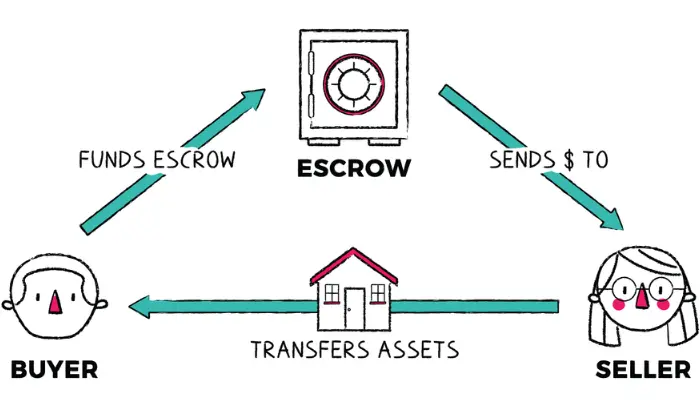
On the other hand, the players will only receive a part of their compensation back if the NHL generates less money than expected. The NHL suppresses it in advance because no one will send a check back to their employer after receiving payment.
How much Escrow do the NHL players pay?
- In all of the previous 10 years, it is at least 10%.
- Escrow payments to the club in the 2018–19 season comprised an average of 9.5% of a player’s contract.
Now it is clear why players dislike escrow so much. In addition to the substantial escrow for the individuals, there are two major difficulties.
- By locating the wage cap’s center between the floor and the ceiling, the escrow is determined. In other terms, the NHL will decide on a revenue split between the player salaries floor and a maximum that is equal to 50/50.
- The escalator is an additional problem. The NHL player’s collective bargaining agreement also includes a provision that allows them to utilize an “escalator” to increase the cap by up to 5% annually. The wage cap can be raised by 5% by the players over what the NHL established by using this escalator.
According to professional players, this makes it possible for clubs to offer players better and more expensive contracts. The escalator is optional for the participants.
You can read this article: Who Is The Highest-Paid Player In The NHL?
Escrow in the new CBA
The NHL and NHLPA established a new Collective Bargaining Act (CBA) in the previous years during the lockdown. The opposing teams established a limitation on the amount of escrow during each of the following six years as a component of the new CBA.
Both parties benefit from this as it provides the owner’s expense stability. It also provides gamers a cap on how much revenue they will lose.
Due to the pandemic, net revenue would undoubtedly decline and this is advantageous for both parties. The NHL will struggle to reclaim the $5 billion milestone in yearly profits.
Below is the detail of the escrow cap for the next six seasons:
| No. | Years | Escrow Cap |
| 1 | 2020-21 | 20% |
| 2 | 2021-22 | 14-18% |
| 3 | 2022-23 | 10% |
| 4 | 2023-24 | 6% |
| 5 | 2024-25 | 6% |
| 6 | 2025-26 | 6% |
Conclusion: What is Escrow in the NHL?
Now that it is clarified what is escrow NHL that is the deducted part of the player’s payment. Clubs usually wait to pay the remaining payment until they count all the revenues at the end of the year. If they will get the desired income, they pay back the money to the players, otherwise, they don’t pay back.



